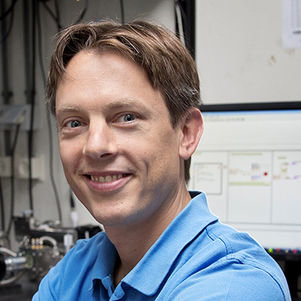"‘Internet of plants’ can provide a wealth of information about the plant, the soil, the environment, weather and climate that was previously completely unavailable"
Climate change, air pollution and food shortages. These three worldwide problems are closely interlinked. A growing world population and continued urbanisation also mean that these problems are only likely to increase still further. Faced with such circumstances, it is becoming increasingly challenging to achieve successful harvests. In response to this, the Plantenna project is focusing on the development of sensor technology that can collect information about a plant's condition and environment from within the plant itself. If plants with these kinds of sensors are linked together in networks, the result is an ‘Internet of plants’, providing data that can be used in climate and weather monitoring, irrigation and fertilisation. Ultimately, this has the potential to increase crop yields.
Botanical sensors for plants and the environment
Across the world, food production is failing to meet increasing demand. In order to feed a growing world population of more than nine billion people, the yield from food production needs to increase. This is because of the limited availability of new agricultural land and water. Climate change, erratic weather patterns and further urbanisation continue to intensify this challenge. In the near future, most people will be living in large cities, as floods, drought and pollution threaten to endanger both people and crops. Key questions for our future are: how do we improve climate resilience and quality of life in large, self-sufficient cities? At the same time, how can we increase productivity in agriculture and horticulture?

Cyberplant
All kinds of different physical, chemical and biological processes take place within plants. The Plantenna project’s new sensor technology makes it possible to observe these processes in the plant directly. A ‘cyberplant’ – a plant with botanical sensors – can share information about moisture content, cell composition and the quality of the crop itself, for example. It can also give us information about the surrounding environment, such as the quality of the soil and air, wind speed, rainfall or solar strength. Thanks to the speed and reliability of these data, crops can be watered and fertilised at the right time and with precision.
The sensors also provide valuable information about climate, weather and the wider environment. This is important information, because accurate weather forecasts are essential for agriculture. For example, they help to determine the best times for sowing and harvesting. In the longer term, sensor monitoring will also help in efforts to achieve a sustainable and healthy living environment.
Internet of plants
Researchers at the four Dutch universities of technology – TU Delft, the University of Twente, TU Eindhoven and Wageningen University – have joined forces in order to make this pioneering cyberplant technology possible. They have developed sensors that can take readings directly in the sap flow (which plants use to transport water and glucose between leaves and roots) and register plant movements. Ideally, the various sensors in a plant will form an autonomous and self-sufficient system. With this in mind, the programme is also exploring whether the sensors can be powered directly from the plant or use the plant as a form of antenna in order to share the readings with other plants.
Together, these plants will then be able to form a network – an ‘Internet of plants’ – that can provide a wealth of information about themselves, the soil, the environment, weather and climate that was previously completely unavailable. In a city, a network of plants of this kind could collect valuable information about the city’s microclimate, increasing the accuracy of local weather forecasting.
Challenges and opportunities
The programme, coordinated by TU Delft's Prof. Peter Steeneken, is bringing together research groups in the fields of sensor technology, electronics, communication and environmental monitoring. They are exploring the various challenges presented by the project, including the integration of electronics in the plant and communication between plants. They are also investigating how the information that cyberplants provide can be used to make real improvements to crop and climate monitoring. In order to achieve this, the teams are liaising closely with experts in the fields of biotechnology and agrobiology. Several companies from the high-tech industry are involved in the programme. Although the technical challenges are formidable, they are outweighed by the long-term opportunities this technology offers. Although still in its very early days, cyberplant technology has the potential to become a game-changing technology for the future.
To learn more about the latest results visit: Plantenna Demonstrator: Sensing early signs of drought stress

